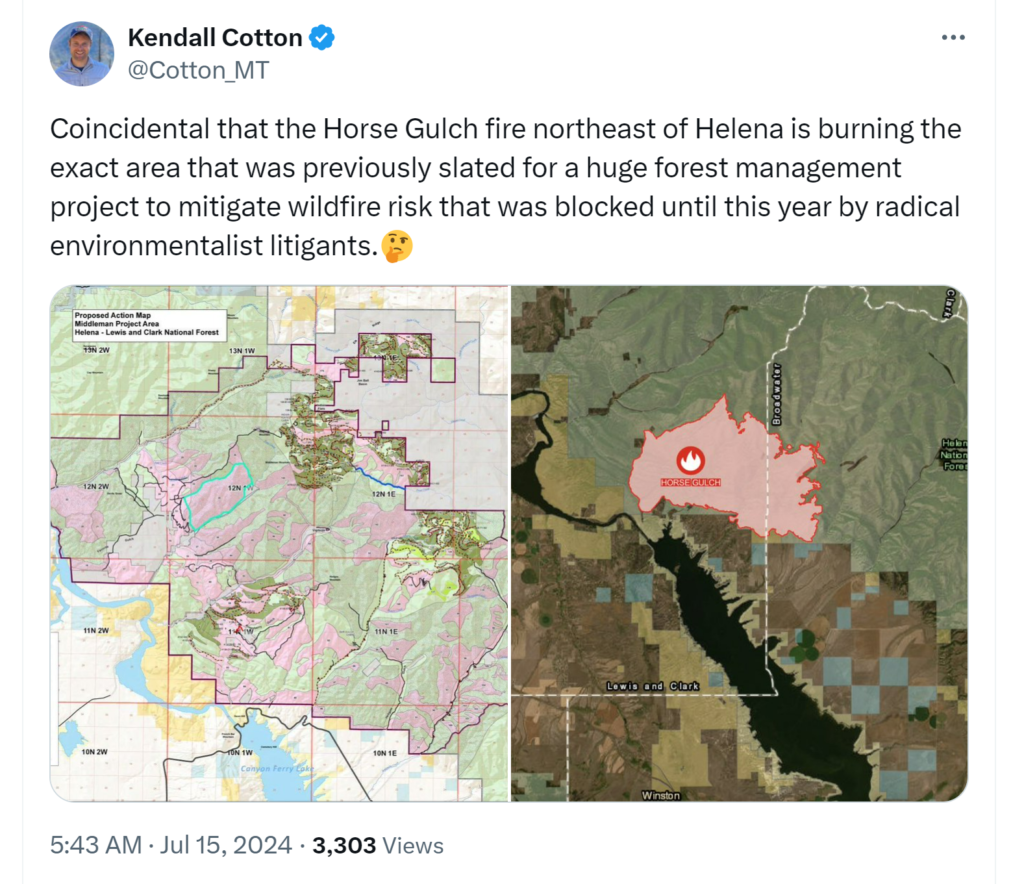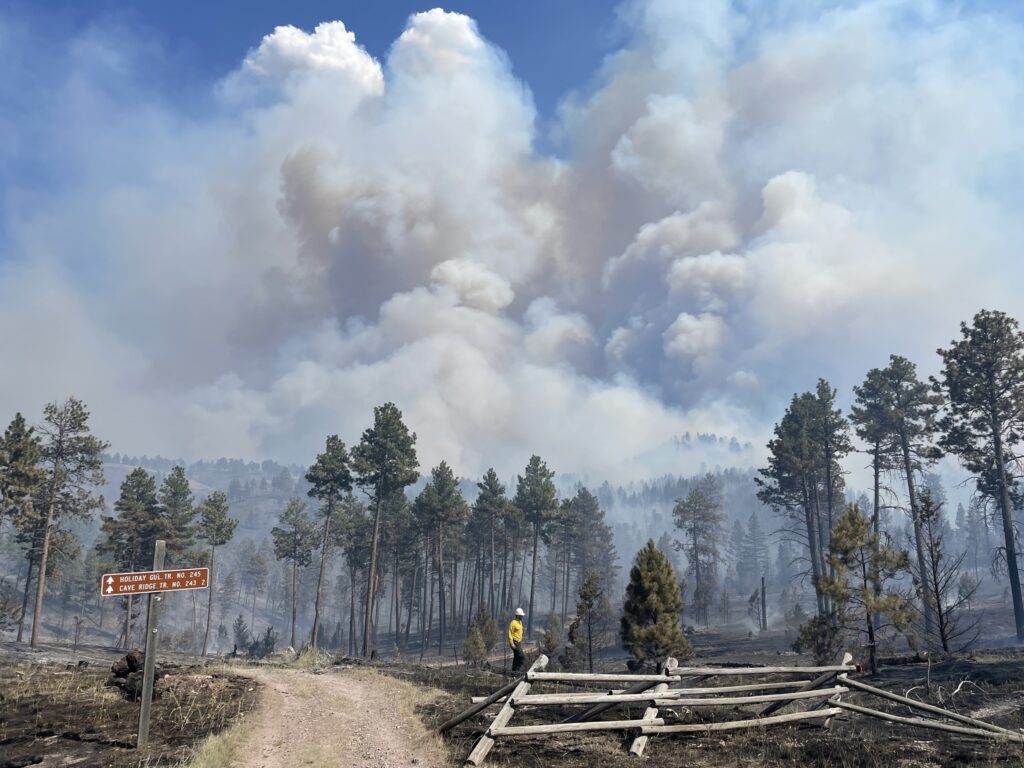This post was originally published on Healthy Forest
Writing recently on X (formerly Twitter), Frontier Institute President and CEO Kendall Cotton observed that Montana’s Horse Gulch Fire is burning in a portion of Helena-Lewis and Clark National Forest that was slated for landscape-scale thinning and controlled burns, that is, before anti-forestry litigation dramatically scaled back the planned effort.

According to an analysis by the Frontier Institute, Middleman Project planned active forest management on 53,131 acres to mitigate wildfire risks, improve forest health, enhance wildlife habitats and reduce carbon emissions. The U.S. Forest Service’s Environmental Assessment for the project noted that a substantial proportion of the project area contains accumulations of hazardous fuels that “pose a risk to the communities of York and Nelson (including outlying developed subdivisions of El Dorado Heights and American Bar), as well as to public and firefighter safety in the event of a wildfire.”
The proposed Middleman Project would have addressed these risks via a combination of active forest management strategies, including logging and prescribed burns, conducted on 53,131 acres out of the total 141,799 acres included in the project.
Ultimately, the Environmental Assessment for the Middleman Project totaled 584 pages and the project took over a year and a half from scoping to assessment to decision. The Forest Service determined the Middleman Project “will not significantly affect the quality of the human environment, nor will it significantly impact any resource areas,” meaning that it did not require preparation of an even lengthier Environmental Impact Statement.
Two years after the project was approved, two anti-forestry groups sued to stop the project, claiming it violated federal law and in particular the National Environmental Policy Act. The litigants focused on the adequacy and detail of the 584-page Environmental Assessment.
According to the Frontier Institute, instead of a lengthy court battle over the adequacy of the environmental analysis, in April 2024 the Forest Service agreed to a settlement in which it made huge concessions to reduce the scale of the Middleman Project, forgoing almost all of the planned timber harvest and temporary road construction. The Forest Service even agreed to pay a bonus of $39,000 of taxpayer dollars to the anti-forestry groups to cover attorney fees!
Just as the Forest Service warned, the area was ripe for wildfire. To date the Horse Gulch Fire has burned almost 15,000 acres, threatening nearby communities and tragically claiming the life of a firefighter. To date, the wildfire has cost an estimated $6 million to contain.

In celebrating the settlement, one of the anti-forestry litigants proclaimed, “We can now be happy that grizzly, elk and lynx habitat will not be sacrificed to subsidize the timber industry in the Big Belt Mountains northeast of Helena.”
As the Horse Gulch Fire continues to burn, it’s unclear how much grizzly, elk and lynx habitat has been sacrificed in a wildfire that possibly could have been prevented through active forest management.
Source: Healthy Forest





0 Comments